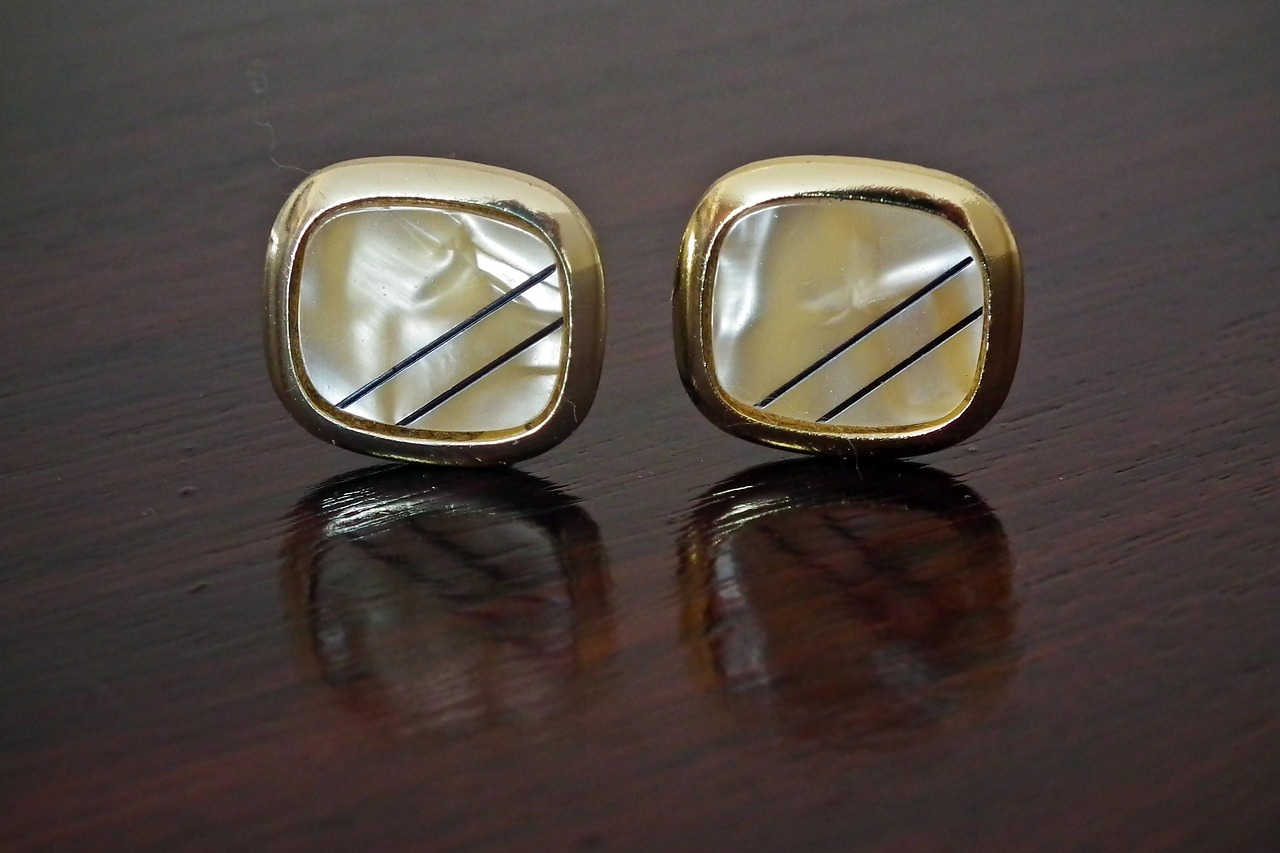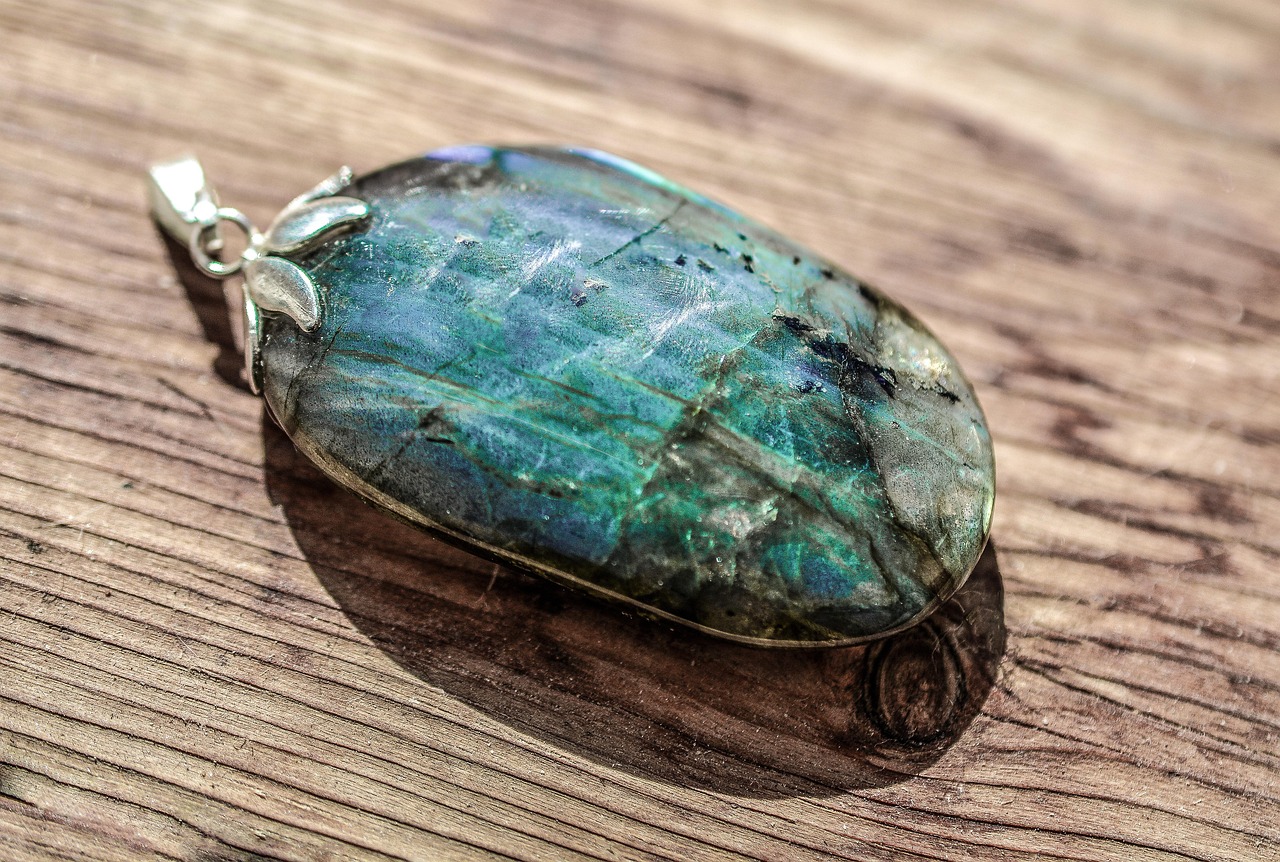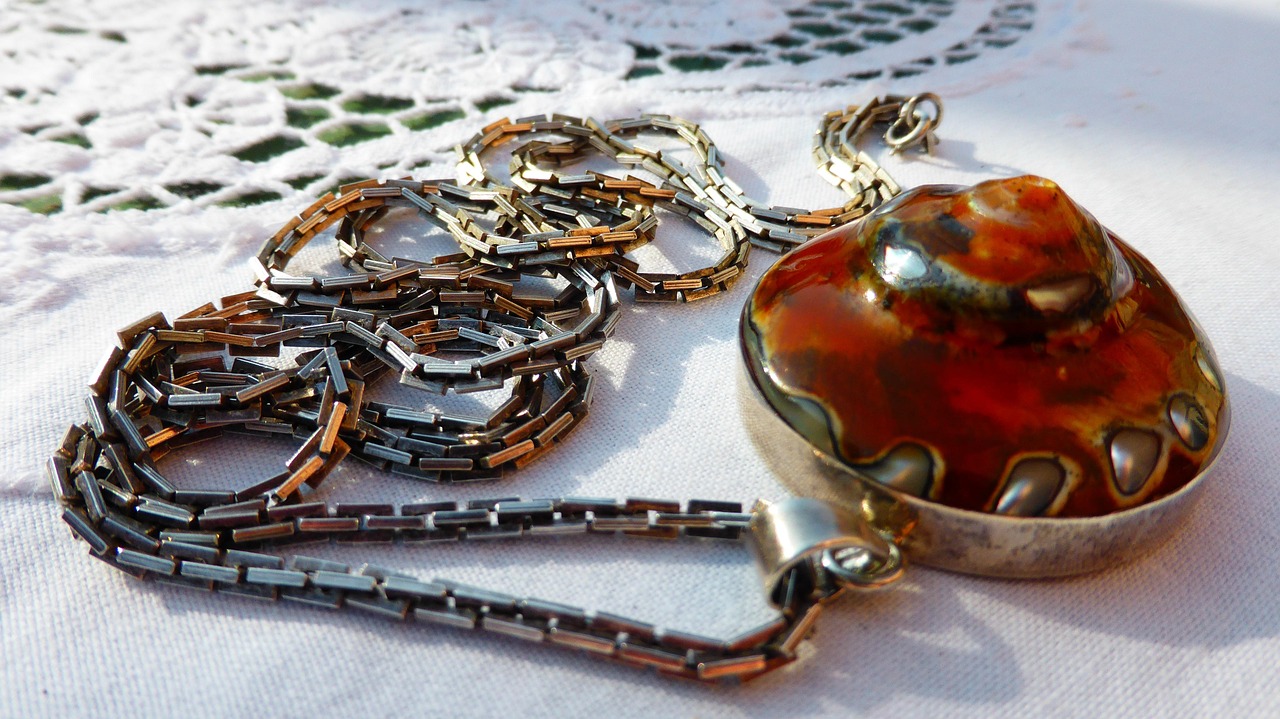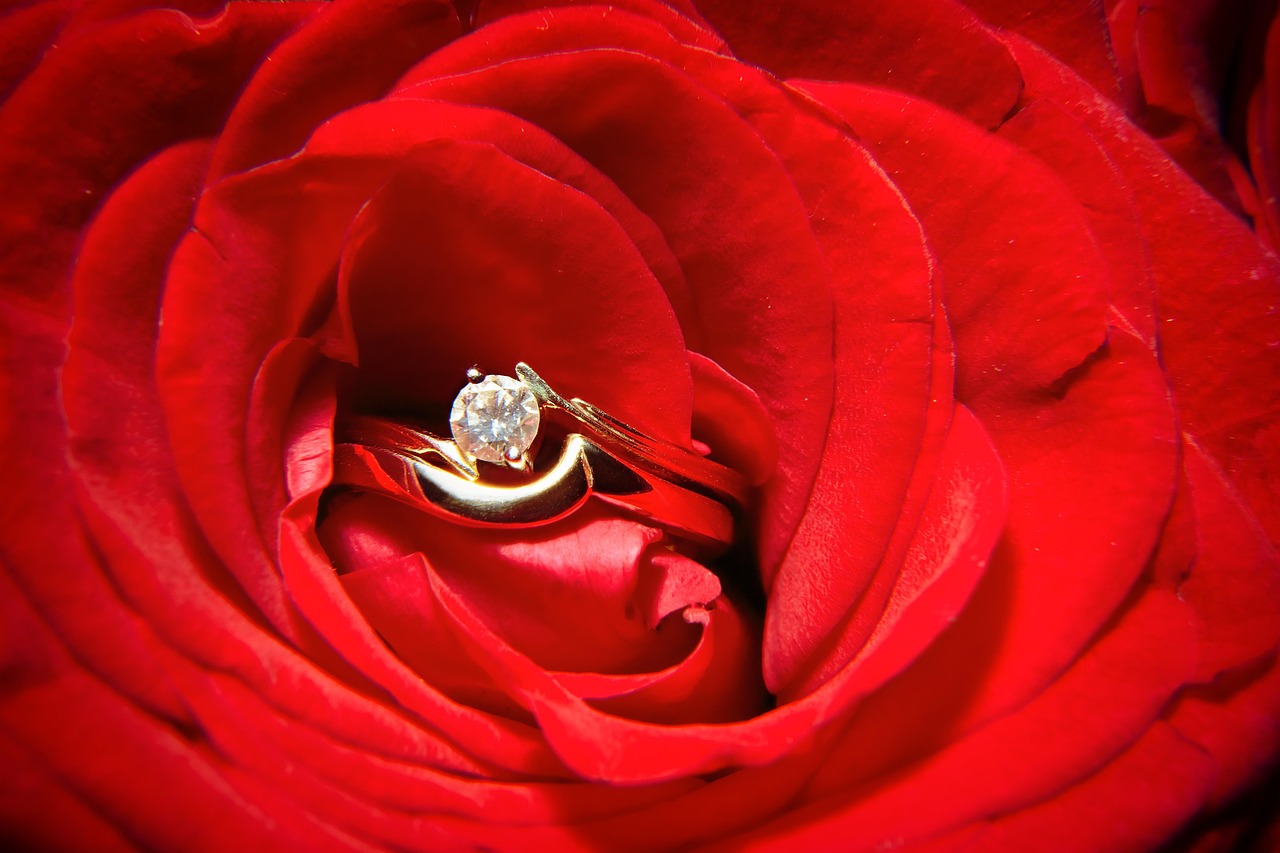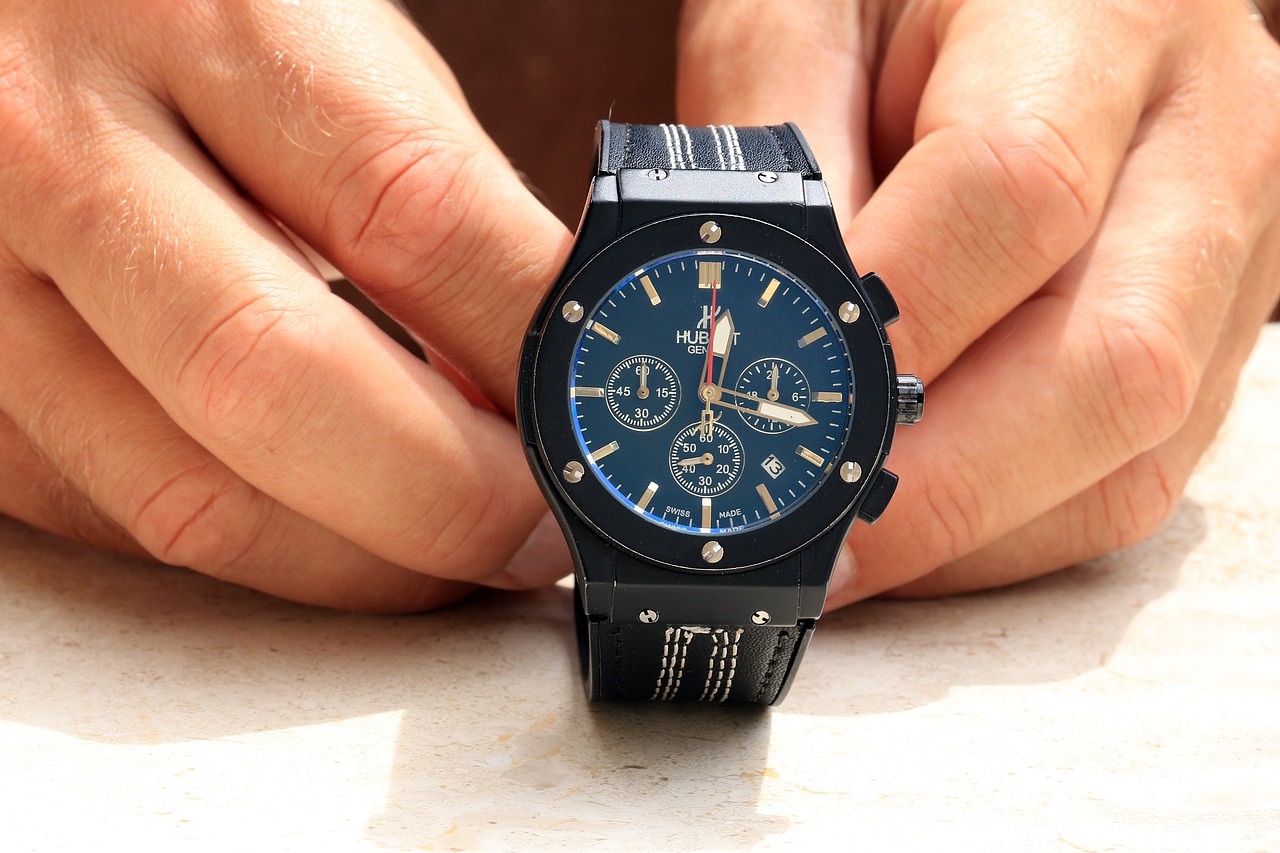This article delves into the distinct allure of vintage jewelry as an investment opportunity. It discusses the potential for value appreciation, current market trends, and offers practical tips for both collectors and investors.
What Makes Vintage Jewelry Unique?
Vintage jewelry is celebrated for its historical significance, exceptional craftsmanship, and one-of-a-kind designs. Each piece tells a story, often reflecting the era in which it was made. This uniqueness not only enhances its aesthetic appeal but also its market value. Collectors and investors alike are drawn to the artistry and cultural relevance that vintage pieces embody.
How Does Vintage Jewelry Appreciate in Value?
The value of vintage jewelry can appreciate over time due to several factors, including rarity, demand, and prevailing market trends. Understanding these elements is crucial for making informed investment decisions.
- Rarity and Demand: Rarity is a key determinant of value. Pieces that are hard to find often command higher prices, particularly if they are in demand among collectors.
- Limited Production Runs: Jewelry produced in small quantities is often more desirable, making it a potentially lucrative investment.
- Celebrity Associations: Items worn by famous personalities can see a significant increase in market value, driven by their popularity and cultural significance.
Market Trends: Keeping an eye on market trends is vital for investors. The vintage jewelry market can shift based on changing tastes, economic conditions, and fashion cycles, making it essential to stay informed.
What Should You Look for When Buying Vintage Jewelry?
When considering a purchase, it’s important to evaluate several factors to ensure a wise investment:
- Authenticity Verification: Always verify the authenticity of vintage pieces. Engaging with reputable dealers and seeking certificates of authenticity can safeguard your investment.
- Condition and Restoration: The physical state of a piece significantly impacts its value. Be cautious with restoration, as improper techniques can diminish a piece’s worth.
Where to Buy Vintage Jewelry?
Identifying reliable sources for acquiring vintage jewelry is crucial. Here are some options:
- Online Marketplaces: Websites like Etsy and eBay offer a vast array of vintage jewelry. However, buyers should conduct thorough research on sellers to avoid counterfeit items.
- Antique Shops and Auctions: Visiting local antique shops and auctions can uncover hidden treasures. Knowledgeable sellers can provide valuable insights into the history and value of pieces.
How to Care for Vintage Jewelry?
Proper maintenance is essential for preserving the integrity and value of vintage jewelry. Here are some care tips:
- Cleaning Techniques: Use gentle cleaning methods to avoid damaging delicate materials. Research safe cleaning solutions suitable for specific types of jewelry.
- Storage Solutions: Store vintage pieces in a cool, dry place. Use soft pouches or lined boxes to prevent scratches and tangling.
What Are the Risks of Investing in Vintage Jewelry?
Like any investment, vintage jewelry comes with its own set of risks. Being aware of these can help investors make better choices:
- Market Volatility: The vintage jewelry market can be unpredictable, with values fluctuating based on trends and economic conditions.
- Counterfeit Concerns: The risk of encountering counterfeit items is significant. Learning to identify fakes is crucial to protecting your investment.
In conclusion, vintage jewelry can be a rewarding investment for those who appreciate its unique qualities and understand the market dynamics. With diligent research and careful consideration, it can yield impressive returns over time.
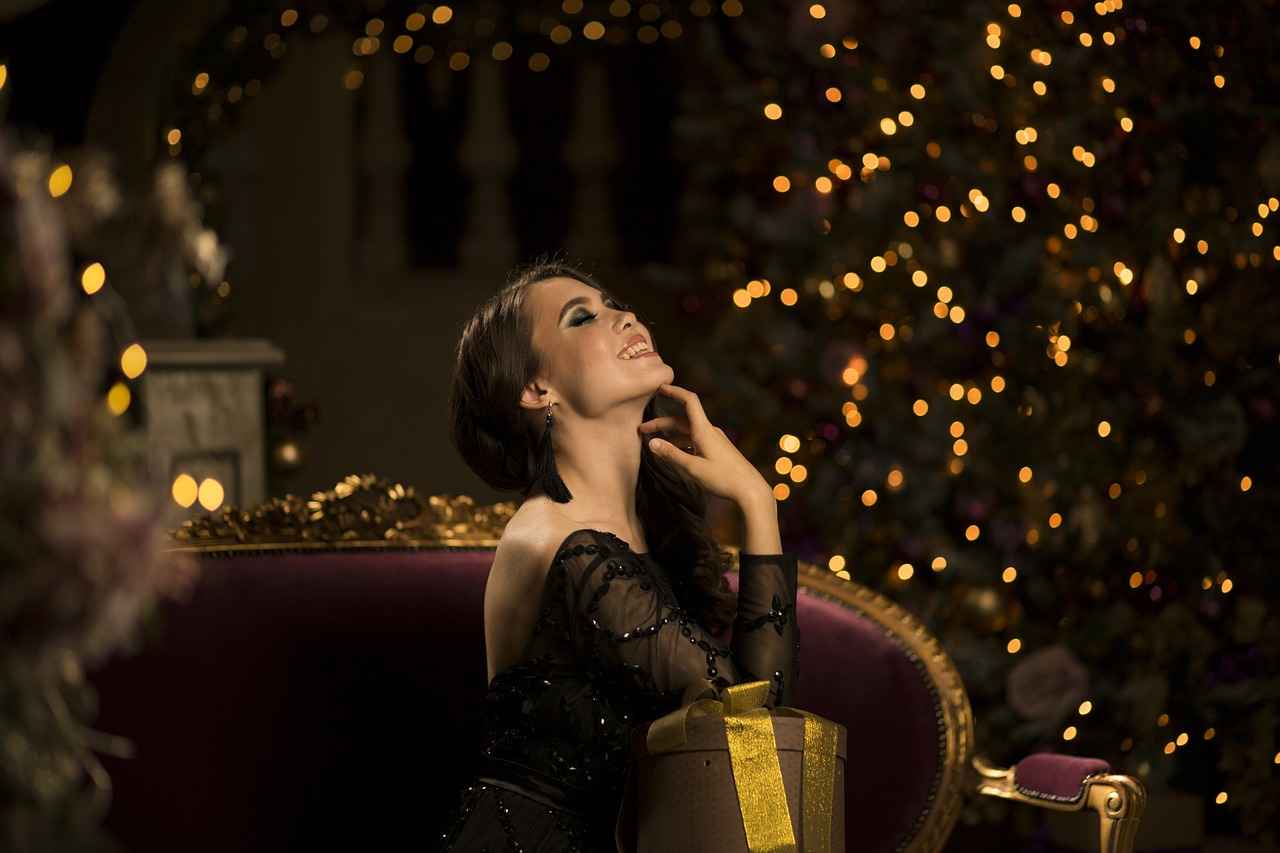
What Makes Vintage Jewelry Unique?
Vintage jewelry holds a special place in the hearts of collectors and enthusiasts alike. Its appeal lies not only in its aesthetic beauty but also in the rich history and craftsmanship behind each piece. As we delve into the factors that make vintage jewelry unique, we uncover the stories, artistry, and cultural significance that contribute to its enduring charm.
One of the most compelling aspects of vintage jewelry is its historical significance. Each piece often represents a specific era, reflecting the styles, materials, and societal norms of the time. For example, Art Deco jewelry, known for its geometric shapes and bold colors, gained popularity in the 1920s and 1930s, symbolizing a break from traditional designs. Understanding the historical context of a piece can greatly enhance its value and appeal to collectors.
Another key factor is the craftsmanship involved in creating vintage jewelry. Unlike many modern pieces that are mass-produced, vintage jewelry often showcases intricate handwork and unique techniques that are no longer commonly used. This level of detail not only adds to the beauty of the piece but also signifies a level of quality that is highly sought after. Collectors appreciate the time and effort that went into crafting each item, making them more than just accessories but rather pieces of art.
Additionally, the unique designs found in vintage jewelry set it apart from contemporary styles. Each era has its own distinct characteristics, from the ornate designs of Victorian jewelry to the minimalist aesthetics of mid-century pieces. This variety allows collectors to find items that resonate with their personal style, making vintage jewelry a versatile addition to any collection. The uniqueness of these designs often leads to a higher demand among collectors, further enhancing their value.
Moreover, the emotional connection that vintage jewelry can evoke adds another layer to its uniqueness. Many pieces come with stories of past owners, significant events, or cultural heritage, making them more than mere objects. This emotional resonance often drives collectors to seek out specific pieces that reflect their own experiences or aspirations, creating a deeper bond with the jewelry.
When considering vintage jewelry as an investment, it’s essential to assess its value accurately. Factors such as rarity, condition, and provenance play crucial roles in determining how much a piece is worth. Rarity can significantly affect value; pieces that are hard to find or produced in limited quantities are often more valuable. Additionally, understanding the condition of a piece is vital, as well-preserved items generally command higher prices.
Provenance, or the history of ownership, can also enhance a piece’s value. Jewelry with a well-documented history, especially if it was owned by a notable figure, can attract significant interest from collectors. Thus, thorough research into both the piece and its background is crucial for anyone looking to invest in vintage jewelry.
Investing in vintage jewelry offers several advantages. Firstly, the potential for appreciation in value over time can make it a lucrative investment. As trends shift and the demand for unique pieces grows, many investors find that their vintage jewelry appreciates significantly. Furthermore, unlike stocks or bonds, vintage jewelry provides a tangible asset that can be enjoyed and worn.
In conclusion, the uniqueness of vintage jewelry stems from its rich history, exceptional craftsmanship, and distinctive designs. By understanding these elements, collectors and investors can appreciate the true value of these timeless pieces. As the vintage jewelry market continues to evolve, those who recognize its potential will find themselves part of a vibrant and rewarding community.

How Does Vintage Jewelry Appreciate in Value?
Investing in vintage jewelry can be a rewarding venture, not only for the aesthetic pleasure it provides but also for its potential to appreciate in value over time. Understanding the factors that contribute to this appreciation is crucial for collectors and investors alike.
The value of vintage jewelry can increase significantly due to several key factors, including rarity, demand, and market trends. Each of these elements plays a pivotal role in determining how much a piece may be worth in the future.
Rarity is one of the most significant determinants of a vintage jewelry piece’s value. Items that are difficult to find often command higher prices, especially if they are sought after by collectors. For instance:
- Limited Production Runs: Jewelry produced in small quantities can become highly valuable. Understanding the production numbers can help assess potential worth.
- Unique Designs: Pieces with distinctive designs, especially those from renowned designers, are often more valuable due to their uniqueness.
The demand for specific types of vintage jewelry can fluctuate, impacting prices. Factors that can drive demand include:
- Celebrity Associations: Jewelry worn by famous personalities can see a spike in value. For example, pieces that have appeared in movies or were owned by celebrities often attract collectors.
- Fashion Trends: As trends in fashion evolve, certain styles of vintage jewelry may become more desirable, driving up their market value.
Understanding current market trends is essential for anyone looking to invest in vintage jewelry. The market can be influenced by various factors, including:
- Economic Conditions: The overall economy can impact how much people are willing to spend on luxury items, including vintage jewelry.
- Collector Interest: The level of interest among collectors in specific styles or eras can significantly affect prices.
When considering vintage jewelry as an investment, it’s important to evaluate potential pieces carefully. Here are some tips:
- Research Provenance: Understanding the history and ownership of a piece can enhance its value. Provenance can add a layer of authenticity that appeals to buyers.
- Condition Assessment: The condition of a piece is crucial. Jewelry that has been well-preserved or professionally restored can be more valuable than those in poor condition.
Like any investment, vintage jewelry comes with its risks. Being aware of these can help you make informed decisions:
- Market Volatility: The vintage jewelry market can be unpredictable, with values fluctuating based on changing trends and economic conditions.
- Counterfeit Concerns: The risk of encountering counterfeit pieces is significant. It’s essential to work with reputable dealers and verify authenticity.
In conclusion, vintage jewelry can be a smart investment for those who understand the nuances of its value appreciation. By focusing on rarity, demand, and market trends, collectors can make informed decisions that may lead to significant returns over time.
Rarity and Demand
Rarity and demand are two of the most significant factors influencing the value of vintage jewelry. Collectors and investors alike are often drawn to pieces that are not only unique but also hard to find. As a result, understanding how these elements interact can greatly enhance one’s investment strategy in the vintage jewelry market.
Vintage jewelry is often categorized by its scarcity. Items produced in limited quantities or those that are no longer in production tend to become highly sought after. For example, a limited edition piece from a renowned designer can fetch prices significantly higher than similar items that are mass-produced. The rarity of such pieces means that they are likely to appreciate in value over time, especially if they are kept in good condition.
Another aspect to consider is the historical significance of the piece. Jewelry that has a compelling backstory, such as being worn by a famous figure or linked to a significant event, can see its value soar. This connection to history not only adds a layer of intrigue but also enhances its desirability among collectors. Pieces with a provenance—a documented history of ownership—are often more valuable than those without such a background.
The demand for vintage jewelry is also influenced by current trends. For instance, certain styles may experience a resurgence in popularity, leading to increased interest and higher prices. Collectors often keep a close eye on fashion trends and auctions to identify which pieces are gaining traction. As a result, understanding market trends can be crucial for making informed purchasing decisions.
| Factors Affecting Value | Examples |
|---|---|
| Rarity | Limited production runs, one-of-a-kind pieces |
| Historical significance | Celebrity ownership, connection to historical events |
| Current demand | Resurgence of specific styles, trends in fashion |
Moreover, the emotional aspect of collecting vintage jewelry cannot be overlooked. Many collectors are not just interested in the financial investment; they are also passionate about the artistry and craftsmanship that goes into each piece. This emotional connection can further drive demand, as collectors are willing to pay a premium for items that resonate with them personally.
In conclusion, the interplay between rarity and demand is pivotal in determining the value of vintage jewelry. As an investor or collector, recognizing these factors can help you make more informed decisions and potentially lead to lucrative investments. Whether you are drawn to the history, craftsmanship, or simply the aesthetic appeal of vintage jewelry, understanding its market dynamics can enhance your experience and success in this fascinating field.
Limited Production Runs
When it comes to investing in jewelry, can offer unique advantages. These pieces, often crafted in small quantities, not only showcase exceptional artistry but also hold significant potential for value appreciation. Understanding the implications of limited production can guide collectors and investors in making informed decisions.
The value of jewelry produced in limited quantities stems from its rarity and the exclusivity it offers. Collectors are often drawn to pieces that are not widely available, making them more desirable in the market. This demand can lead to increased prices over time, especially if the piece resonates with a particular trend or cultural moment.
Recognizing limited production jewelry requires attention to detail. Here are some key factors to consider:
- Production Numbers: Many jewelers provide specific production numbers for their limited runs. A lower number often indicates higher rarity.
- Designer Signature: Pieces signed by renowned designers or brands can significantly enhance value.
- Documentation: Certificates of authenticity and original packaging can verify the piece’s limited status.
The market for limited production jewelry is influenced by various trends. Keeping an eye on these trends can help investors make strategic choices:
- Celebrity Endorsements: Jewelry worn by celebrities can skyrocket in value, especially if it is from a limited run.
- Fashion Trends: Current fashion movements can affect the desirability of certain styles or eras, impacting their market value.
- Historical Significance: Pieces linked to significant events or movements can see increased interest and value.
Investing in limited production jewelry is not just about immediate financial gain. It also offers a chance to own a piece of artistry and history. Moreover, as the market evolves, the appreciation of these pieces can provide substantial returns. Here are some reasons to consider this investment:
- Long-term Value: As demand grows and supply remains limited, the value of these pieces can appreciate significantly.
- Emotional Connection: Owning a unique piece can foster a deeper connection to the art and craftsmanship involved.
- Potential for Resale: The resale market for limited production jewelry is often robust, allowing for profitable transactions.
While the potential for profit is enticing, investing in limited production jewelry comes with its challenges:
- Market Volatility: The jewelry market can be unpredictable, with values fluctuating based on trends and economic factors.
- Counterfeit Risks: The allure of limited production pieces can attract counterfeiters, making it essential to verify authenticity.
- Storage and Care: Proper maintenance is crucial to preserve the integrity and value of these pieces over time.
In conclusion, understanding the intricacies of limited production runs can enhance your investment strategy in vintage jewelry. By recognizing the factors that contribute to their value and staying informed about market trends, you can make well-rounded investment decisions that may yield significant returns in the long run.
Celebrity Associations
When it comes to vintage jewelry, one of the most fascinating aspects is its connection to celebrities and popular culture. The allure of pieces that have been worn by famous individuals can greatly enhance their market value. This phenomenon is not merely a passing trend; it reflects a deep-seated desire among collectors and enthusiasts to own a piece of history.
The association of vintage jewelry with celebrities can create a significant buzz in the market. When a piece is linked to a well-known figure, its desirability skyrockets. This is because consumers often seek to emulate the style of their favorite stars, leading to increased demand for similar items. As a result, the market value of these pieces can appreciate over time.
Celebrity endorsements can act as a catalyst for the appreciation of vintage jewelry. When a celebrity is seen wearing a specific piece, it can lead to a surge in interest and demand. This can significantly drive up the prices, especially if the piece is rare or has a unique story behind it. Collectors who are aware of such trends can make informed decisions about their investments.
- Audrey Hepburn’s Tiffany & Co. Necklace: This iconic piece sold for a staggering amount at auction, illustrating how celebrity ownership can elevate value.
- Princess Diana’s Engagement Ring: Now worn by Kate Middleton, this ring has seen its value increase due to its royal association.
- Elizabeth Taylor’s Jewelry Collection: Taylor’s extensive collection fetched millions at auction, showcasing the financial potential of celebrity-linked pieces.
Investors should be vigilant when searching for celebrity-associated pieces. Here are some tips:
1. Research the celebrity's history with the piece.2. Verify authenticity through reputable sources.3. Look for provenance documents that trace the piece's ownership.
In today’s digital age, social media plays a pivotal role in amplifying the value of celebrity jewelry. Platforms like Instagram and TikTok allow celebrities to showcase their jewelry collections to millions of followers, creating instant demand. This rapid visibility can lead to price increases almost overnight.
For collectors, understanding the dynamics of celebrity associations is crucial. Not all pieces will appreciate equally; factors such as the celebrity’s current popularity and the historical significance of the piece come into play. Additionally, trends in the vintage jewelry market can shift, impacting values.
In summary, the connection between vintage jewelry and celebrities is a powerful driver of market value. Recognizing the influence of celebrity associations can help collectors make informed investment decisions. By staying attuned to market trends and understanding the stories behind the pieces, investors can capitalize on the unique appeal of celebrity-linked vintage jewelry.
Market Trends
play a pivotal role in shaping the value of vintage jewelry, making it essential for collectors and investors to stay informed. The vintage jewelry market is influenced by various factors, including changing consumer preferences, economic conditions, and the resurgence of specific styles. Understanding these trends can empower investors to make educated purchasing decisions and maximize their investment potential.
The vintage jewelry market is not static; it evolves with time. Trends can shift based on cultural influences, celebrity endorsements, and even social media. For instance, a particular style may gain popularity due to a celebrity wearing it at a high-profile event, causing a spike in demand. This surge can significantly affect pricing, making it crucial for investors to keep their fingers on the pulse of current trends.
- Revival of Retro Styles: Many collectors are gravitating towards designs from the 70s and 80s, which are seeing a resurgence in popularity.
- Sustainability and Ethical Sourcing: As consumers become more environmentally conscious, vintage jewelry is often seen as a sustainable choice, enhancing its appeal.
- Personalization: Customization and unique pieces are highly sought after, leading to increased demand for one-of-a-kind vintage items.
Investors should leverage various resources to stay updated on market trends. Here are some effective strategies:
- Follow Industry Experts: Subscribe to newsletters or blogs by vintage jewelry experts and appraisers who regularly discuss market trends.
- Join Collector Groups: Engaging with communities on social media platforms can provide insights into emerging trends and popular pieces.
- Attend Auctions and Shows: Participating in vintage jewelry shows and auctions can offer firsthand experience of current market dynamics.
The value of vintage jewelry can fluctuate dramatically based on market trends. For example, pieces that were once considered outdated may see a revival, causing their prices to soar. Conversely, items that fall out of favor can lose value quickly. Therefore, understanding the relationship between trends and value is essential for making wise investment choices.
To successfully navigate the vintage jewelry market, investors should consider the following tips:
- Research Thoroughly: Before making a purchase, research the current trends and historical data related to the piece.
- Be Patient: Trends can take time to develop. Avoid rushing into investments based on fleeting fads.
- Network with Other Investors: Building relationships with other collectors can provide valuable insights and help you stay ahead of trends.
In conclusion, staying informed about market trends is vital for anyone interested in investing in vintage jewelry. By understanding the factors that influence value and leveraging resources to keep up with trends, investors can make informed decisions that enhance their collections and investment portfolios.

What Should You Look for When Buying Vintage Jewelry?
When embarking on the journey of purchasing vintage jewelry, it is vital to approach the process with a keen eye and informed perspective. The allure of vintage pieces often lies not only in their aesthetic appeal but also in their historical significance and potential investment value. However, to ensure a wise investment, one must consider several critical factors.
One of the foremost considerations when buying vintage jewelry is authenticity. Genuine vintage pieces often come with unique hallmarks, signatures, or stamps indicating their origin and maker. It is advisable to:
- Research the brand or designer to understand their specific markings.
- Seek out reputable dealers who provide certificates of authenticity.
- Use online resources and forums dedicated to vintage jewelry to validate claims.
The condition of vintage jewelry can significantly influence its value. Pieces that are well-preserved or in excellent condition typically command higher prices. Consider the following:
- Examine the jewelry for any signs of wear, such as scratches or missing stones.
- Understand the impact of restoration; while some repairs can enhance value, others may detract from it.
- Request detailed photographs from sellers, focusing on intricate details and potential flaws.
Provenance refers to the history of ownership of a particular piece. A well-documented provenance can greatly enhance a piece’s value and appeal. When assessing provenance, consider:
- The jewelry’s history—was it owned by a notable figure or featured in significant events?
- Documentation that can verify its past, including receipts, auction catalogs, or previous appraisals.
- How the piece fits into the broader context of jewelry trends and historical movements.
Understanding current market trends is essential for making informed purchasing decisions. Vintage jewelry markets can fluctuate based on various factors, including:
- Changing consumer preferences and fashion trends.
- The influence of social media and celebrity endorsements on specific styles.
- Economic conditions that may affect disposable income and investment behaviors.
Finding the right source for vintage jewelry can make a significant difference in your buying experience. Consider these options:
- Antique Shops: Often filled with unique finds, these shops can provide valuable insights from knowledgeable sellers.
- Online Marketplaces: Websites dedicated to vintage jewelry offer a vast selection, but ensure you research sellers thoroughly.
- Auctions: Attending auctions can yield rare pieces, but be prepared for competitive bidding.
In conclusion, purchasing vintage jewelry is an exciting endeavor that requires careful consideration of authenticity, condition, provenance, market trends, and reliable sources. By focusing on these essential factors, collectors and investors can make informed decisions that not only enhance their jewelry collection but also serve as a smart financial investment.
Authenticity Verification
When investing in vintage jewelry, is a critical step that cannot be overlooked. As the market for vintage pieces grows, so does the prevalence of counterfeit items. Ensuring that your jewelry is genuine not only protects your financial investment but also preserves the historical and sentimental value of the piece.
Authenticity is essential for several reasons:
- Value Preservation: Genuine vintage jewelry tends to appreciate over time, while counterfeit pieces can lead to significant financial losses.
- Historical Significance: Authentic pieces carry stories and craftsmanship that replicas simply cannot replicate.
- Market Demand: Collectors and investors are more likely to seek out verified items, making authenticity a vital factor in resale potential.
Here are some effective methods to ensure the authenticity of vintage jewelry:
- Work with Reputable Dealers: Establish a relationship with trusted jewelers and dealers who specialize in vintage items. Their expertise can guide you in making informed purchases.
- Obtain Certificates of Authenticity: Whenever possible, request a certificate from the dealer. This document serves as proof of the item’s origin and authenticity.
- Research the Brand: Familiarize yourself with the specific brand or designer of the jewelry. Each brand has distinct hallmarks and characteristics that can help verify authenticity.
- Inspect the Craftsmanship: Authentic vintage jewelry often exhibits high-quality craftsmanship. Look for signs of wear consistent with the age of the piece, as well as details like clasps, settings, and engravings.
Being aware of the common indicators of counterfeit jewelry can save you from regrettable purchases:
- Poor Quality Materials: Fake pieces often use inferior materials that can tarnish or break easily.
- Inconsistent Hallmarks: Check for discrepancies in hallmarks or missing marks altogether. Genuine vintage jewelry typically has well-defined hallmarks.
- Unusual Pricing: If a deal seems too good to be true, it probably is. Authentic vintage jewelry usually holds its value, making extremely low prices a red flag.
Investing time in learning about vintage jewelry can enhance your ability to identify authentic pieces. Consider joining local collector groups or online forums where enthusiasts share insights, experiences, and tips on authenticity verification.
In summary, ensuring the authenticity of vintage jewelry is not just a precaution; it is a vital part of the investment process. By working with reputable dealers, obtaining certificates of authenticity, and educating yourself about the signs of genuine versus counterfeit pieces, you can confidently build a valuable collection that stands the test of time.
Condition and Restoration
play a pivotal role in determining the value of vintage jewelry. When investing in these unique pieces, it is essential to understand how their condition can significantly influence their market worth.
Vintage jewelry, with its rich history and craftsmanship, can vary widely in condition. Factors such as wear and tear, previous repairs, and overall preservation are crucial in assessing a piece’s value. A well-maintained item often commands a higher price, while pieces in poor condition may be less desirable. Thus, potential buyers should always scrutinize the condition of the jewelry they intend to purchase.
Why Is Condition Important? The condition of vintage jewelry can impact its aesthetic appeal and functionality. For instance, a necklace with a broken clasp or a ring with missing stones not only detracts from its beauty but may also require costly repairs. These factors can lead to a decrease in value, making it essential for buyers to evaluate the extent of wear and any necessary restorations.
How Does Restoration Affect Value? Restoration can be a double-edged sword. On one hand, it can enhance the beauty and longevity of a piece; on the other hand, it can also diminish its value if not done correctly. Authenticity is paramount, and improper restoration can lead to a piece being labeled as “repaired,” which can significantly lower its market appeal.
When considering restoration, it is crucial to seek out skilled professionals who specialize in vintage jewelry. Expert restoration can breathe new life into a piece while maintaining its original character. However, buyers should be wary of over-restoration, which can alter a piece’s historical integrity.
What Should You Look For? When evaluating vintage jewelry, consider the following:
- Signs of Wear: Look for scratches, dents, or discoloration that may indicate significant wear.
- Previous Repairs: Check for signs of past repairs, such as mismatched stones or solder marks.
- Original Components: Ensure that the piece retains its original parts, as replacements can affect value.
- Documentation: Certificates of authenticity and restoration records can provide valuable insights into the piece’s history.
How to Approach Restoration? If you find a vintage piece that requires restoration, consider these steps:
- Consult Experts: Reach out to reputable jewelers or restoration specialists who have experience with vintage items.
- Assess Costs: Get estimates for restoration work to ensure it aligns with your budget and the piece’s potential value.
- Preserve Originality: Opt for restoration techniques that maintain the piece’s original charm and character.
In summary, understanding the of vintage jewelry is vital for making informed purchasing decisions. By carefully evaluating these aspects, collectors and investors can ensure that their investments not only retain their value but also continue to tell the stories of the past.
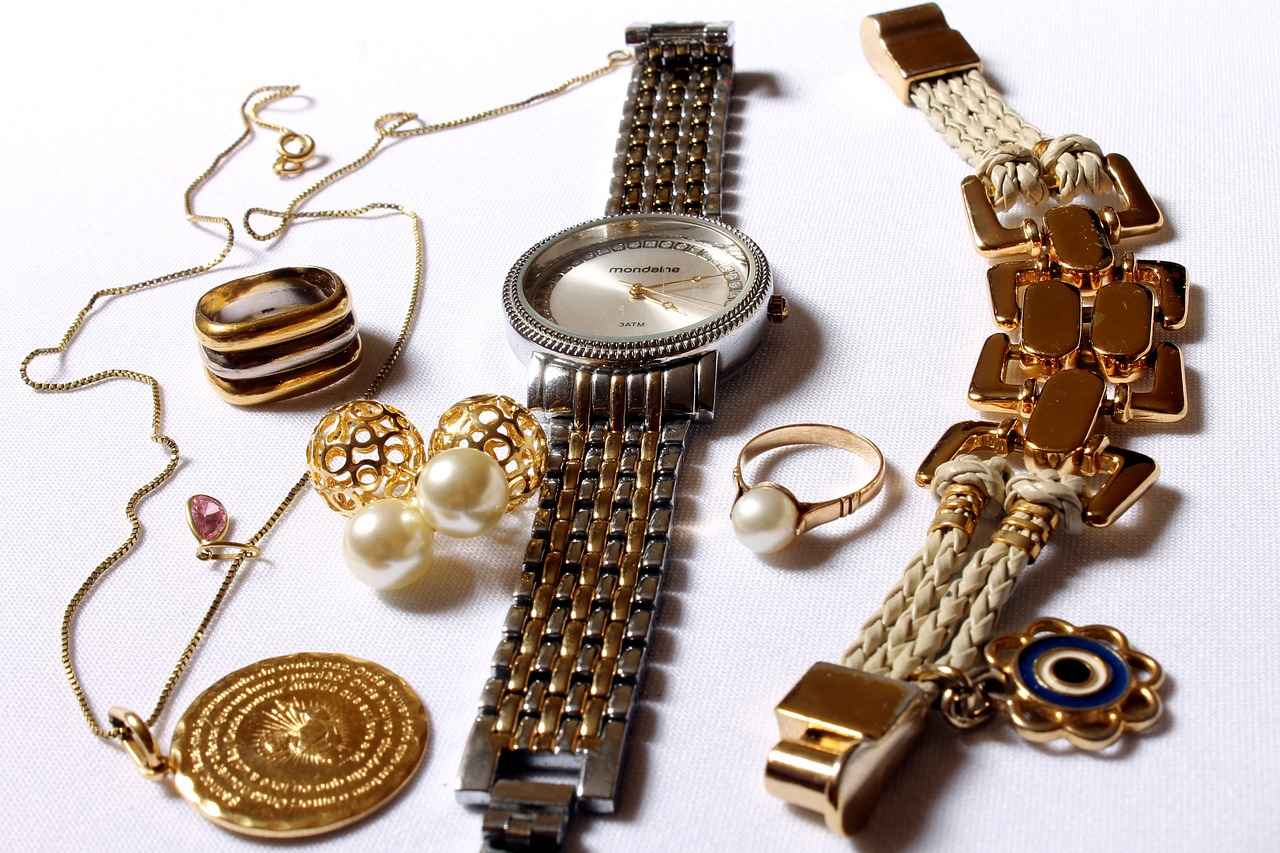
Where to Buy Vintage Jewelry?
When it comes to purchasing vintage jewelry, finding the right sources is essential. With a plethora of options available, each platform and marketplace offers unique pieces, along with their respective advantages and disadvantages. Understanding these sources can significantly enhance your buying experience and investment potential.
Online marketplaces have revolutionized the way we shop for vintage jewelry. Websites like Etsy, eBay, and 1stdibs provide a vast selection of items from various eras. However, while the convenience of browsing from home is appealing, it also comes with challenges. Buyers must exercise caution when selecting sellers. Here are some tips:
- Read Reviews: Check feedback from previous buyers to gauge the seller’s reliability.
- Request Certification: Ask for certificates of authenticity to ensure the piece is genuine.
- Compare Prices: Conduct research to understand the average market price for similar items.
Visiting local antique shops can be a rewarding experience for vintage jewelry enthusiasts. These shops often carry unique pieces with rich histories. Engaging with knowledgeable shop owners can provide valuable insights about the items. Here are a few advantages of shopping at antique stores:
- Personal Interaction: You can ask questions and get immediate feedback from the seller.
- Hands-On Examination: Inspect the jewelry closely to assess its condition and craftsmanship.
- Discover Hidden Gems: You may find rare pieces that are not available online.
Participating in auctions can be an exhilarating way to acquire vintage jewelry. Auction houses often feature exclusive collections that attract collectors. However, it’s important to be well-prepared:
- Research the Auction House: Ensure they have a good reputation for selling authentic pieces.
- Know Your Limits: Set a budget before bidding to avoid overspending in the heat of the moment.
- Examine Items Pre-Auction: Attend preview days to inspect the jewelry before placing bids.
Estate sales can yield incredible finds as they often include personal collections. Buying directly from the estate can sometimes mean lower prices compared to retail. Here are some tips for navigating estate sales:
- Arrive Early: Get there before the sale starts to have the best selection.
- Negotiate: Don’t hesitate to discuss prices; sellers may be willing to negotiate.
- Check for Authenticity: Always verify the authenticity of the pieces you are interested in.
In recent years, social media platforms like Instagram and Facebook Marketplace have become popular venues for buying vintage jewelry. Many sellers showcase their collections through beautiful photography, making it easy to discover unique pieces. However, be cautious:
- Follow Reputable Sellers: Look for sellers with a solid following and positive feedback.
- Engage with the Community: Join groups or forums dedicated to vintage jewelry to gain insights and recommendations.
- Verify Before Purchase: Always ask for additional photos and information to ensure quality.
In conclusion, whether you choose online marketplaces, antique shops, auctions, estate sales, or social media, each source has its own set of pros and cons. By understanding these options and conducting thorough research, you can make informed decisions that enhance your vintage jewelry collection.
Online Marketplaces
have revolutionized the way collectors and enthusiasts access vintage jewelry. With a vast selection available at the click of a button, buyers can explore a wide range of styles, eras, and price points. However, while the convenience of online shopping is appealing, it is crucial for buyers to exercise caution and conduct thorough research on sellers to avoid the risk of counterfeit items.
When purchasing vintage jewelry online, the potential for encountering counterfeit or misrepresented items is significant. Researching sellers helps ensure that you are buying from reputable sources. Here are some steps to consider:
- Check Reviews and Ratings: Look for feedback from previous buyers. High ratings and positive reviews can indicate a trustworthy seller.
- Verify Authenticity Guarantees: Reputable sellers often provide certificates of authenticity or guarantees. Ensure these documents are available and valid.
- Assess Return Policies: A reliable seller should have a clear return policy. This protects you in case the item does not meet your expectations.
When browsing online marketplaces, it’s essential to pay attention to specific details in the listings:
- Detailed Descriptions: Look for comprehensive descriptions that include information about the piece’s history, materials, and condition.
- High-Quality Images: Sellers should provide clear, high-resolution images from multiple angles. This allows you to assess the piece’s condition and craftsmanship.
- Clear Pricing: Understand the pricing structure, including any additional fees such as shipping or taxes.
Identifying counterfeit vintage jewelry can be challenging, but there are several signs to watch for:
- Inconsistent Markings: Authentic vintage pieces often have specific hallmarks or maker’s marks. Research these markings to ensure they match the era and designer.
- Poor Craftsmanship: Examine the quality of the piece. Authentic vintage jewelry typically showcases superior craftsmanship compared to mass-produced replicas.
- Material Composition: Be wary of items advertised as gold or silver that lack proper hallmarks or show signs of wear inconsistent with their age.
There are numerous online platforms where you can find vintage jewelry, each with its own advantages and disadvantages:
- Specialty Vintage Websites: Sites dedicated to vintage jewelry often have a curated selection and knowledgeable sellers. Examples include 1stdibs and Ruby Lane.
- General Marketplaces: Websites like eBay and Etsy offer a wide variety, but buyers must be diligent in researching sellers and verifying authenticity.
- Social Media Platforms: Instagram and Facebook groups can be great for finding unique pieces, but ensure you verify the seller’s reputation before making a purchase.
Buying vintage jewelry online can be a rewarding experience if approached with care. By conducting thorough research, understanding what to look for in listings, and being vigilant against counterfeits, you can enhance your chances of making a wise investment. Remember that the world of vintage jewelry is not only about acquiring beautiful pieces but also about preserving history and appreciating the craftsmanship that has stood the test of time.
Antique Shops and Auctions
Exploring antique shops and attending auctions can be an exhilarating experience for collectors and enthusiasts alike. These venues often serve as treasure troves, filled with unique pieces that tell stories of the past. Engaging with knowledgeable sellers not only enhances your understanding of the items but also deepens your appreciation for their historical significance.
Antique shops are more than just retail spaces; they are curated collections of history. When you step into an antique shop, you are likely to encounter a variety of items, from vintage jewelry to classic furniture. Here are some reasons why visiting these shops can be beneficial:
- Unique Finds: Unlike mass-produced items, antiques often possess unique characteristics. Each piece has a story, making it a conversation starter.
- Expert Guidance: Knowledgeable sellers can provide insights into the history and craftsmanship of the items, helping you make informed decisions.
- Networking Opportunities: Building relationships with antique dealers can lead to exclusive opportunities, such as early access to new arrivals or upcoming auctions.
Auctions can be thrilling, offering a dynamic environment where bidders compete for coveted items. Here’s what to keep in mind:
- Research: Prior to attending, research the items on the auction block. Understanding their market value can help you set a budget.
- Inspection: Take advantage of preview days to inspect items closely. Look for signs of authenticity and condition.
- Bid Strategy: Develop a bidding strategy. Decide in advance the maximum amount you are willing to bid for each item.
One of the most rewarding aspects of visiting antique shops and auctions is the opportunity to engage with sellers. These individuals often have extensive knowledge about the items they sell. Here’s how to make the most of these interactions:
- Ask Questions: Don’t hesitate to ask about the history of a piece, its origin, and any restoration efforts it may have undergone.
- Share Your Interests: Let sellers know what you are looking for. They may have items that are not on display or upcoming pieces that fit your interests.
- Learn About Market Trends: Knowledgeable sellers can provide insights into current market trends, helping you make informed investment decisions.
Both antique shops and auctions can yield hidden gems that may not be readily apparent. Here are some tips for uncovering these treasures:
- Look Beyond the Surface: Sometimes, a piece may require cleaning or minor restoration to reveal its true beauty.
- Consider Less Popular Items: While everyone may be vying for the same high-demand pieces, lesser-known items can also appreciate significantly over time.
- Trust Your Instincts: If something catches your eye, trust your instincts. The emotional connection you feel can often lead to wise investments.
In conclusion, visiting antique shops and auctions provides not only the thrill of the hunt but also valuable opportunities to learn and connect with history. By engaging with knowledgeable sellers, you can enhance your understanding of the pieces and their rich histories, making your collecting experience even more rewarding.

How to Care for Vintage Jewelry?
When it comes to vintage jewelry, proper care and maintenance are essential for preserving not only its integrity but also its value. Understanding the best practices for cleaning and storing these unique pieces can significantly prolong their lifespan and enhance their beauty.
Vintage jewelry is often made with delicate materials and intricate designs that can be easily damaged if not cared for properly. Over time, neglect can lead to tarnishing, loss of stones, and structural damage. By investing time in proper care, you can ensure that these pieces remain in excellent condition for years to come.
Cleaning vintage jewelry requires a gentle touch and the right materials. Here are some effective methods:
- Use Mild Soap and Water: For most pieces, a mixture of warm water and mild soap can effectively clean without causing harm. Use a soft cloth or a toothbrush with soft bristles to gently scrub.
- Avoid Harsh Chemicals: Stay away from abrasive cleaners or those containing alcohol, ammonia, or bleach, as these can damage the finish and integrity of the jewelry.
- Dry Thoroughly: After cleaning, make sure to dry the pieces thoroughly with a soft cloth to prevent moisture buildup, which can lead to tarnishing.
Proper storage is just as crucial as cleaning. Here are some tips to keep your vintage jewelry safe:
- Use Soft Pouches or Boxes: Store each piece in a soft pouch or a lined jewelry box to prevent scratching and tangling. Avoid using plastic bags, as they can trap moisture.
- Keep Away from Direct Sunlight: Store your jewelry in a cool, dark place to prevent fading and deterioration of materials.
- Separate Different Materials: If your collection includes pieces made from different materials (e.g., pearls, gemstones, metals), store them separately to avoid reactions that could damage the pieces.
Even seasoned collectors can make mistakes. Here are some common pitfalls:
- Over-Cleaning: Excessive cleaning can wear down finishes and settings. Clean only when necessary.
- Ignoring Condition: Pay attention to signs of wear. If a piece is damaged, consult a professional for repairs rather than attempting DIY fixes.
- Neglecting Regular Checks: Periodically inspect your vintage jewelry for any signs of damage or wear. Early detection can prevent more significant issues.
For intricate repairs or specialized cleaning, it’s wise to consult a professional jeweler experienced in vintage pieces. They can provide services such as:
- Restoration: Expert restoration can breathe new life into worn pieces and maintain their value.
- Appraisal: A professional appraisal can give you an accurate understanding of your jewelry’s value, which is essential for insurance and investment purposes.
In conclusion, taking proper care of vintage jewelry is not just about maintaining its aesthetic appeal; it’s also about preserving its value as an investment. By employing the right cleaning techniques, ensuring proper storage, avoiding common mistakes, and consulting professionals when needed, you can enjoy your vintage jewelry for many years while safeguarding its worth.
Cleaning Techniques
When it comes to preserving the allure of vintage jewelry, play a critical role. These unique pieces often carry a rich history and exquisite craftsmanship, making them cherished items for collectors and enthusiasts alike. However, improper cleaning can lead to irreversible damage, diminishing their beauty and value. Thus, understanding the right cleaning methods is essential for maintaining these treasures.
Using appropriate cleaning methods is essential to avoid damaging vintage pieces. Knowing which materials are safe for cleaning can help maintain their beauty. Vintage jewelry can be made from a variety of materials, including gold, silver, platinum, and even delicate gemstones. Each of these requires specific care to ensure longevity.
- Soft Cloths: Use a soft, lint-free cloth to gently wipe away dirt and oils.
- Gentle Cleaners: Opt for pH-balanced jewelry cleaners that are safe for various metals and stones.
- Water: For many pieces, lukewarm water can be effective, but avoid soaking items for too long.
- Toothbrush: A soft-bristled toothbrush can help clean intricate designs without scratching the surface.
Different materials require tailored cleaning methods:
- Gold Jewelry: A mixture of mild soap and warm water is usually sufficient. Gently scrub with a soft cloth or toothbrush.
- Silver Jewelry: Use a silver polish or a cloth specifically designed for silver. Avoid harsh chemicals that can cause tarnishing.
- Gemstone Jewelry: Depending on the stone, a gentle soap solution may be suitable. However, be cautious with porous stones like opal or turquoise, which may be damaged by water.
- Costume Jewelry: For pieces made from synthetic materials, a damp cloth is often best. Avoid immersing them in water.
It’s just as important to know what not to do when cleaning your vintage pieces:
- Avoid Abrasive Cleaners: Harsh chemicals and abrasive materials can scratch and damage the surface.
- Do Not Soak: Avoid soaking delicate pieces, especially those with glued components or porous stones.
- Skip the Ultrasonic Cleaners: These can be too harsh for many vintage pieces, leading to potential damage.
Cleaning frequency depends on how often you wear the jewelry. For regularly worn pieces, a light cleaning after each use is advisable. For items that are seldom worn, a thorough cleaning before storage can help maintain their condition. Regular inspection for signs of wear or damage is also essential.
In addition to cleaning, proper storage is crucial. Use individual soft pouches or dedicated compartments in a jewelry box to prevent scratches and tangling. Keeping pieces away from direct sunlight and humidity can also help preserve their integrity.
By employing the right cleaning techniques and storage solutions, you can ensure that your vintage jewelry remains as stunning as the day you acquired it. With careful attention and knowledge, these cherished pieces can be enjoyed for generations to come.
Storage Solutions
When it comes to preserving the beauty and value of vintage jewelry, proper storage solutions are essential. Many collectors and investors may overlook this aspect, but the way you store your pieces can significantly impact their condition over time. In this section, we will explore various storage methods and tips to ensure your vintage jewelry remains in pristine condition.
Storing vintage jewelry correctly prevents damage and wear. Exposure to elements like humidity, light, and temperature fluctuations can lead to tarnishing, discoloration, and even structural damage. Implementing effective storage solutions can protect your investment for years to come.
- Use Individual Pouches or Boxes: Each piece should be stored separately to avoid scratching and tangling. Soft pouches made of fabric or dedicated jewelry boxes are ideal.
- Avoid Plastic: Plastic can emit chemicals that may tarnish metals. Opt for materials that are acid-free and safe for long-term storage.
- Control the Environment: Store your jewelry in a cool, dry place away from direct sunlight. A temperature-controlled environment can help maintain its integrity.
- Consider Anti-Tarnish Solutions: Using anti-tarnish strips or pouches can help keep your silver and other metals looking their best.
Organizing your vintage jewelry collection not only helps in easy access but also allows you to keep track of your pieces. Here are some tips:
- Catalog Your Collection: Maintain a detailed inventory that includes descriptions, purchase dates, and any provenance. This can be invaluable for insurance purposes.
- Group by Type: Organize your jewelry by type, such as rings, necklaces, and bracelets. This makes it easier to find specific pieces when needed.
- Use Clear Containers: If you prefer to store jewelry in containers, opt for clear boxes. This allows you to see your collection without opening each box.
Improper storage can lead to irreversible damage. Here are some common risks:
- Tarnishing: Exposure to air and moisture can cause metals to tarnish, diminishing their luster and value.
- Physical Damage: Pieces can become scratched or broken if not stored securely, especially those with delicate settings or gemstones.
- Loss of Parts: Chains can easily tangle, and clasps can break if not stored properly, leading to missing or damaged components.
It’s advisable to reassess your storage solutions periodically, especially if you acquire new pieces. Make it a habit to check your collection every six months to ensure that everything is in good condition and properly stored. This practice not only helps in maintaining the jewelry but also keeps your collection organized and up-to-date.
In conclusion, investing time and effort into the proper storage of vintage jewelry is crucial for its preservation and value retention. By following these guidelines, you can ensure that your collection remains as stunning as the day you acquired each piece.
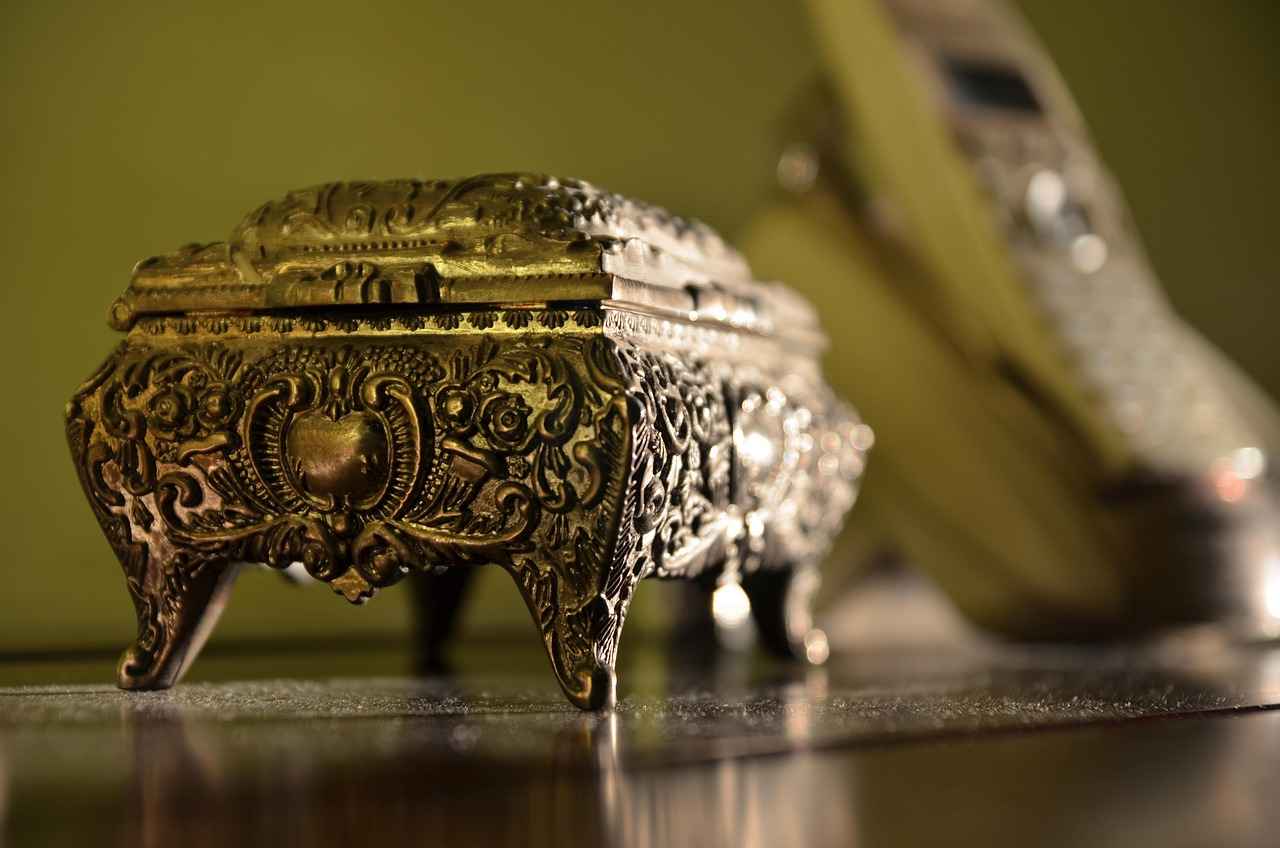
What Are the Risks of Investing in Vintage Jewelry?
Investing in vintage jewelry can be an exciting venture, but it is essential to recognize that, like any investment, it carries inherent risks. Understanding these risks can empower investors to make informed decisions and navigate potential pitfalls effectively.
The vintage jewelry market is known for its unpredictability. Values can fluctuate significantly based on changing trends, economic conditions, and consumer preferences. Investors should be aware that while some pieces may appreciate in value, others might not perform as expected. Keeping an eye on market trends and economic indicators can help mitigate risks associated with market volatility.
One of the most pressing risks in the vintage jewelry market is the presence of counterfeit items. As demand for vintage pieces increases, so does the likelihood of encountering fakes. To protect your investment, it is crucial to develop the skills necessary to identify authentic pieces. Working with reputable dealers, obtaining certificates of authenticity, and educating yourself about specific brands and styles can significantly reduce the risk of purchasing counterfeit jewelry.
The condition of vintage jewelry plays a vital role in its overall value. Pieces that are well-preserved typically command higher prices than those that show signs of wear. However, restoration can be a double-edged sword; while it can enhance a piece’s appearance, it may also affect its value negatively if not done correctly. Understanding the nuances of restoration and how it impacts a piece’s authenticity is essential for any investor.
Staying informed about current market trends is crucial for anyone looking to invest in vintage jewelry. Trends can shift rapidly, influenced by fashion cycles, celebrity endorsements, and economic factors. For instance, a particular style may fall out of favor, leading to a decrease in demand and value. Conversely, emerging trends can create new opportunities for appreciation. Engaging with industry news and expert analyses can help investors make timely decisions.
Investors often develop an emotional connection to vintage jewelry, especially if it has personal significance or aesthetic appeal. While passion can drive investment decisions, it can also cloud judgment. It is essential to remain objective and evaluate pieces based on market value rather than emotional attachment. Setting clear investment goals and sticking to them can help mitigate this risk.
Improper storage and care of vintage jewelry can lead to deterioration, impacting its value. Factors like humidity, exposure to sunlight, and improper cleaning can cause irreversible damage. Investors should educate themselves on the best practices for storing and caring for their pieces to maintain their condition and value over time. Investing in proper storage solutions and regular maintenance can safeguard your investment.
In conclusion, while vintage jewelry can offer unique investment opportunities, it is vital to be aware of the various risks involved. By understanding market volatility, counterfeit concerns, the importance of condition, and the influence of trends, investors can make informed decisions. Additionally, maintaining objectivity and ensuring proper care can further protect investments in vintage jewelry.
Market Volatility
The vintage jewelry market is a fascinating yet complex landscape. As with many collectibles, the value of vintage jewelry can be highly unpredictable. Fluctuations in value often occur due to shifting trends, economic conditions, and consumer preferences. Understanding this is essential for anyone looking to invest in vintage pieces.
Several factors contribute to the volatility of the vintage jewelry market:
- Trends: Fashion trends can significantly impact the desirability of certain styles and eras of jewelry. For instance, a resurgence in 1920s fashion may lead to increased demand for Art Deco pieces.
- Economic Conditions: Economic downturns often result in decreased discretionary spending. Conversely, during economic booms, collectors may be more willing to invest in high-end vintage items.
- Market Speculation: Just like in other investment markets, speculation can drive prices up or down. Collectors and investors may react to perceived value changes, leading to rapid fluctuations.
To successfully invest in vintage jewelry amidst market volatility, consider the following strategies:
- Research: Stay informed about current trends and market conditions. Regularly read industry publications and follow expert analysts to gain insights into what may be popular.
- Diversification: Just as with any investment portfolio, diversifying your collection can mitigate risks. Invest in a variety of styles, periods, and price ranges to balance potential losses.
- Networking: Engage with other collectors and dealers. Building a network can provide valuable insights and help you stay ahead of market trends.
While the market can be volatile, some pieces tend to hold their value better than others. Here are key factors to consider:
- Provenance: Pieces with a well-documented history or celebrity association often command higher prices.
- Condition: The state of the jewelry plays a critical role in its value. Well-maintained pieces are more likely to appreciate over time.
- Craftsmanship: High-quality craftsmanship and unique designs can make a piece stand out, increasing its desirability.
Investing in vintage jewelry is not without its risks. Here are some potential pitfalls:
- Counterfeits: The presence of counterfeit jewelry can undermine the market. Investors must educate themselves on how to identify fakes.
- Market Saturation: An oversupply of a certain style can lead to decreased prices. Understanding market dynamics is crucial.
- Emotional Attachment: Investors should be cautious of becoming too emotionally attached to their pieces, as this can cloud judgment when it comes to selling.
In conclusion, while the vintage jewelry market is characterized by its unpredictability, informed investors can navigate its complexities. By understanding the factors that influence market fluctuations and employing strategic investment practices, collectors can enhance their chances of success in this vibrant marketplace.
Counterfeit Concerns
The world of vintage jewelry is captivating, offering a blend of history, artistry, and investment potential. However, one of the most significant challenges facing collectors and investors alike is the risk posed by counterfeit pieces. Understanding how to identify fakes is not just a skill; it is a necessity to protect your investment.
The allure of vintage jewelry often attracts counterfeiters looking to capitalize on the demand for authentic pieces. The market for vintage jewelry is lucrative; thus, the presence of counterfeit items can lead to substantial financial losses for unsuspecting buyers.
To safeguard your investment, it is crucial to be able to distinguish between genuine vintage jewelry and replicas. Here are some effective strategies:
- Examine the Craftsmanship: Authentic vintage pieces often exhibit superior craftsmanship. Look for details such as intricate designs, quality settings, and the weight of the piece. Counterfeit items may feel lighter or have rough edges.
- Check for Hallmarks: Many vintage jewelry pieces are stamped with hallmarks indicating their authenticity. Familiarize yourself with the hallmark symbols of reputable manufacturers to validate your purchase.
- Research Provenance: Understanding the history of a piece can provide insight into its authenticity. Provenance refers to the documented history of ownership, and pieces with a clear, traceable background are less likely to be fakes.
In your quest to ensure authenticity, several resources can assist you:
- Professional Appraisers: Consulting with a certified appraiser can provide an expert opinion on the authenticity of a piece. They can offer valuable insights and guidance.
- Online Forums and Communities: Engaging with online communities dedicated to vintage jewelry can be beneficial. Experienced collectors often share their knowledge and tips on identifying fakes.
- Books and Guides: Numerous books and guides focus on vintage jewelry, providing detailed information on how to spot counterfeits. Investing time in research can pay off significantly.
Purchasing counterfeit vintage jewelry can have severe repercussions. Not only can it lead to financial loss, but it can also diminish the joy and satisfaction that comes from owning authentic pieces. Additionally, it can erode trust in the vintage jewelry market, making it harder for genuine sellers to thrive.
To mitigate the risk of purchasing counterfeit jewelry, consider the following protective measures:
- Buy from Reputable Sources: Always purchase vintage jewelry from established dealers or trusted auction houses. Research their reputation and read reviews from previous customers.
- Request Documentation: When buying a piece, ask for any available documentation that proves its authenticity, such as certificates or appraisals.
- Trust Your Instincts: If a deal seems too good to be true, it probably is. Be cautious and trust your instincts when evaluating a potential purchase.
In conclusion, while the presence of counterfeit vintage jewelry is a significant risk, being informed and vigilant can help you safeguard your investment. By learning to identify fakes and taking the necessary precautions, you can enjoy the beauty and value of authentic vintage pieces with confidence.
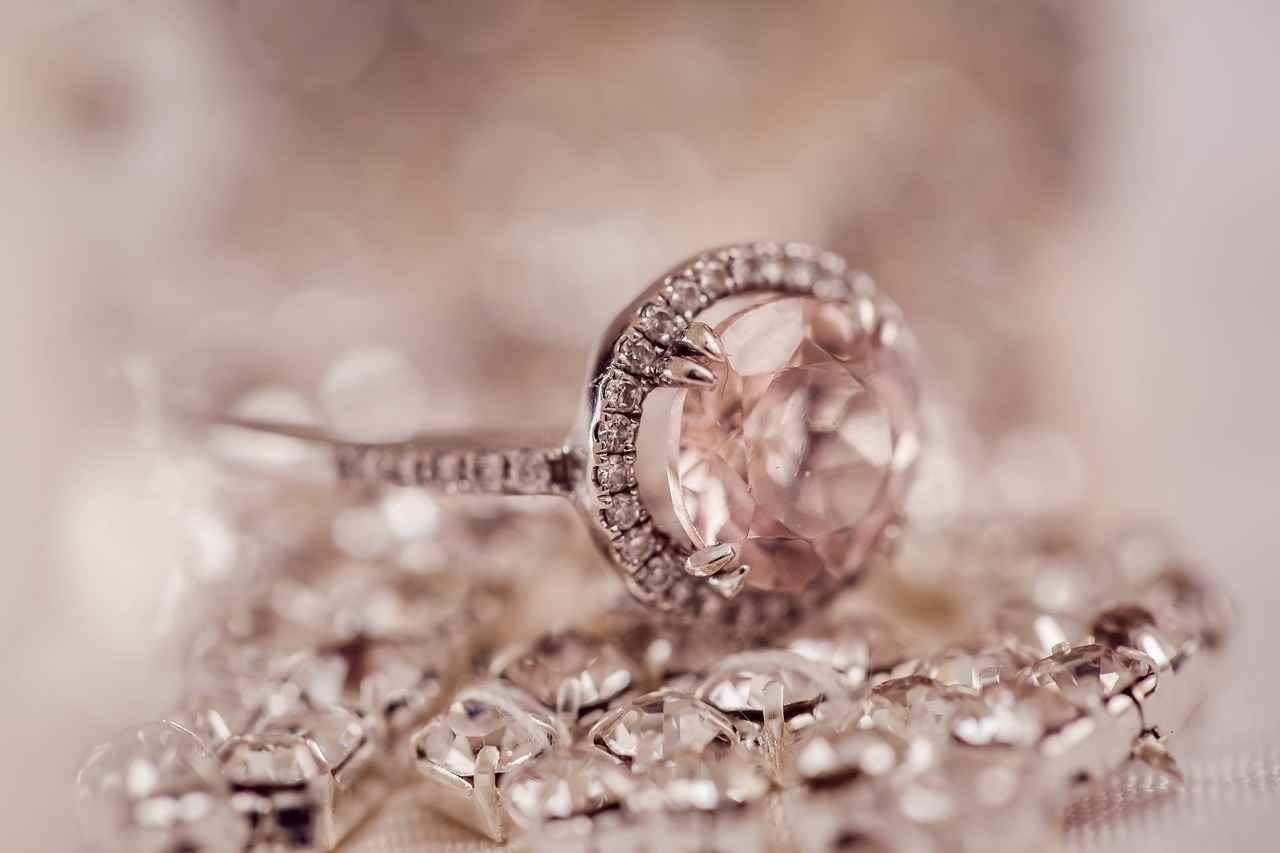
Conclusion: Is Vintage Jewelry Worth the Investment?
Investing in vintage jewelry is not only about acquiring beautiful pieces but also about recognizing their potential as valuable assets. As the market for vintage jewelry continues to grow, understanding its nuances can lead to smart investment decisions. In this article, we will explore the various factors that make vintage jewelry a compelling investment opportunity.
Vintage jewelry offers a unique blend of artistry, history, and potential financial returns. Unlike modern jewelry, vintage pieces often come with stories that add to their charm and value. Collectors and investors alike are drawn to the distinctive craftsmanship and designs that reflect different eras, making them not just adornments but also historical artifacts.
The appreciation of vintage jewelry can be influenced by several key factors:
- Rarity: Limited production pieces tend to hold higher value due to their scarcity.
- Condition: Well-preserved items are more desirable and can fetch higher prices.
- Provenance: A documented history of ownership can significantly enhance a piece’s value.
- Market Trends: Staying informed about current trends can help investors make educated decisions.
When searching for investment-worthy vintage jewelry, consider the following:
- Authenticity: Always verify authenticity through reputable dealers or certificates.
- Craftsmanship: Examine the quality of materials and workmanship. Higher quality often correlates with greater value.
- Historical Significance: Pieces tied to significant events or figures can appreciate more rapidly.
Finding the right sources for vintage jewelry is crucial for successful investments:
- Antique Shops: Local antique shops often carry unique pieces with rich histories.
- Online Marketplaces: Websites like Etsy and eBay can offer a wide selection, but be cautious of counterfeit items.
- Auction Houses: Auctions can be a great way to acquire rare pieces, often at competitive prices.
While vintage jewelry can be a lucrative investment, it’s essential to be aware of potential risks:
- Market Volatility: The vintage jewelry market can fluctuate, influenced by trends and economic conditions.
- Counterfeits: The risk of purchasing counterfeit items is significant, emphasizing the need for careful verification.
Proper maintenance is vital for preserving the value of vintage jewelry:
- Cleaning: Use gentle cleaning methods to avoid damaging delicate materials.
- Storage: Store pieces in a cool, dry place away from direct sunlight to prevent deterioration.
In summary, investing in vintage jewelry can be a wise decision for those who take the time to understand its unique qualities and market dynamics. With careful research, attention to authenticity, and a keen eye for trends, collectors can enjoy not only the beauty of these pieces but also the potential for significant financial returns. Whether you are a seasoned investor or a newcomer, vintage jewelry offers a world of opportunities waiting to be explored.
Frequently Asked Questions
- What defines vintage jewelry?
Vintage jewelry is typically defined as pieces that are at least 20 years old, showcasing unique designs and craftsmanship from a specific era. It often carries historical significance, making it a fascinating collectible.
- How can I determine the value of vintage jewelry?
To determine the value, consider factors like rarity, demand, and condition. Research recent sales of similar pieces and consult with appraisers or reputable dealers for insights on market trends.
- Is it safe to buy vintage jewelry online?
Yes, but caution is key! Always research the seller, read reviews, and look for certifications of authenticity. This helps ensure you’re getting a genuine piece and not a counterfeit.
- What should I do if my vintage jewelry needs repair?
Seek out a professional who specializes in vintage jewelry restoration. They’ll know how to repair it without compromising its value, ensuring it remains a treasured piece.
- Are there any specific care tips for vintage jewelry?
Absolutely! Store pieces in a cool, dry place, away from direct sunlight. Use soft cloths for cleaning and avoid harsh chemicals to keep your jewelry looking its best.

